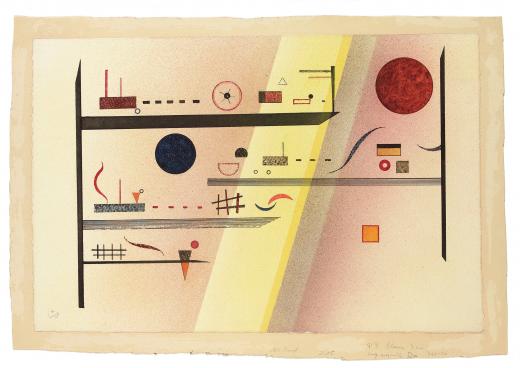GALLERY 307
Hermann and Margrit Rupf were close friends with Paul and Lily Klee, and after 1913 they regularly acquired works from Klee. Considered by the Nazis a “degenerate artist,” Klee moved back to Bern after the closure of the Bauhaus Dessau, where he taught.
The Rupfs were also patrons of many other artists, as well as scientists, and musicians who lived in Bern. Hermann Rupf was an active art critic and played a prominent role in nurturing the taste of the public for contemporary art. Between 1909 and 1931, he wrote criticism for the Social Democratic weekly Berner Tagwacht which was targeted at the conservative cultural policy of the era and called for a greater understanding of contemporary art.
Thanks to their relationship with Klee, in the early 1930s the Rupfs met Vasily Kandinsky and his wife, Nina. In the ensuing years, the two couples became close friends, and the Rupfs remained close with Nina Kandinsky even after her husband’s death in 1944. Sixteen of his works (six of which can be seen in this exhibition) reached the Collection of Hermann and Margrit Rupf, not without difficulties, after the artist’s death. Quiet Tension (Slight Tension), acquired the same year it was painted, 1935, is one of the exceptions. Kandinsky’s works in the show date from 1916 to 1940 and encompass his oeuvre from his temporary return to Russia until his later works in Paris.
Works by Hans Arp, Meret Oppenheim, Lucio Fontana, Christian Megert, and the Zero Group, among others, close and complete the exhibition. The selection in this gallery highlights the fact that the Rupf Collection was never supposed to be viewed as complete, but as an ensemble which should continue to evolve through time and remain a fascinating continuation of the Rupfs’ original collection, mainly through the undeniable preference of the Collection’s acquisition policy for constructivist and conceptual art.





